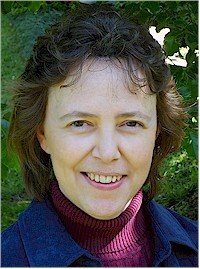 Connections highlights interesting and delightful folks I'm meeting along The Sage Age journey.
Connections highlights interesting and delightful folks I'm meeting along The Sage Age journey.
I was contacted recently by a fiction writer. She was developing a character in her latest book and asked me to give insight into what life may be like for an intuitive who was hesitant about sharing her gift but was finally forced to do so by circumstance. The conversation with this writer brought up several interesting points about the value our culture places on different ways of knowing.
For the most part, Western society places a higher value on the rational sciences than on the intuitive arts. After all, applied science yields modern conveniences. Practically every “thing” you will come into contact with today was created by a physicist, a chemist, and/or an engineer in applied science. By contrast, it’s not as likely that you will come into contact today with many “things” that were created solely by an intuitive. Things created by applied science make money, build economies, and support thriving societies. However, it’s ironic that the things created by intuitives become defining symbols of those societies. These include the “art” in artifacts. In fact, the only way for archeologists to have insight into many lost cultures is through the art that they left behind in the form of writings, sculpture, and paintings.
Since ancient times, the Western education system has preferred a top-down way of teaching. A good example of this method can be found in the way mathematics is taught. Once a person finds an answer, they teach the method for arriving at this conclusion. Modern math tests even dictate that students show their work to demonstrate how they arrived at their answer.
Dr. Linda Silverman is the director of the Institute for the Study of Advanced Development, and its subsidiary, the Gifted Development Center. She is also the author of Upside-Down Brilliance - The Visual-Spatial Learner, in which she demonstrates how current top-down teaching methods are not reaching many kids. A full one-third of folks think in images. She calls this visual-spatial learning. They tend to be wholistic thinkers and do not always go step-by-step through a process. They have the cognitive ability to make intuitive leaps toward correct conclusions. Of course, there is no way for them to demonstrate how they do this. Because the process cannot be documented, it cannot be duplicated nor replicated by all.
The current education system does not encourage just “knowing” an answer. Children who do are often considered gifted. While this may make their parents proud, it can often be a pressure-filled and isolating experience for the child. Those with ways to know things intuitively may find it easier to be quiet about that fact and may even choose to shun the abilities altogether.
Informal polls as well as rigorous scientific surveys show that most people have had some sort of intuitive experience in their lives. Often, these come about during critical periods where someone is in danger for their lives or has an intense emotional response. However, most of these folks don’t consider intuitive knowings to be valuable enough to integrate them into their everyday lives.
That viewpoint seems to be shifting in recent years. More private schools are developing programs to help all students acquire cognitive skills through a variety of techniques that expose them to explicit, or top-down methods, and implicit, or bottom-up methods. The latter lets the child discover the answer for themselves. These methods have been used in Eastern traditions and several indigenous cultures for eons with great success. So, they are not new in the evolution of human thought. They are only new to Western tradition.
Further evidence of this shift in valuing all ways of knowing can be seen in the increasing popularity of self-help books and the proliferation of folks emerging as life-style coaches. Without following a discipline of “know thyself” and listening to one’s inner guidance, the mass populace generally turns to an outside source for self-identity. Advertisers have been quick to exploit this trait and use it to sell their products. The latest variety of this technique can be seen in pharmaceutical commercials. Instead of simply telling you what symptoms a pill relieves, the ad couples the affect to a picture of a better and happier lifestyle.
As a culture, when we begin to value all ways of knowing, perhaps the benefits derived from practicing the intuitive arts will no longer be marginalized and will again be placed on equal footing with rational sensibilities. A harmonious blend of the two will keep each in check and help us to apply discernment to our knowings, which, in turn, will keep us from being caught in the novelty of hearing “little voices” or making decisions based purely on logic without respect to how it will affect the whole.

 Articles - Topics covered in The Sage Age
Articles - Topics covered in The Sage Age 

